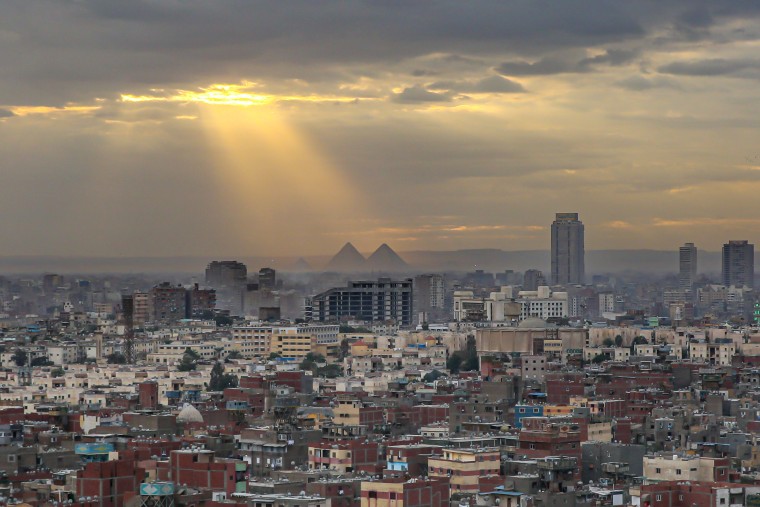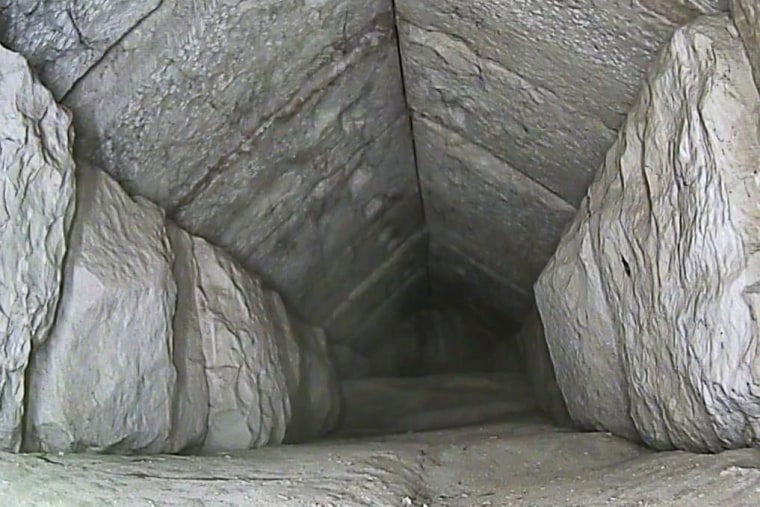A once-hidden corridor has been identified inside the Great Pyramid of Giza after a yearslong project using modern technology to reveal the secrets inside the last of the Seven Wonders of the Ancient World that is still standing.
An international research team used an imaging method based on cosmic rays to analyze a cavity behind the pyramid's north face that was discovered in 2016. Their findings were announced at a news conference with Egyptian officials Thursday outside the 456-foot-tall pyramid.
“This discovery, in my opinion, is the most important discovery of the 21st century,” Zahi Hawass, Egypt’s former antiquities minister, told NBC News on Thursday.
The passage-like space measures about 2 meters wide and 9 meters long, officials said, adding that it was most likely designed to help relieve the weight of the vast structure, which was built as royal burial chambers around 2560 B.C.

The corridor was “protecting or reducing the pressure on something beneath it,” said Mostafa Waziri, the secretary general of Egypt’s Supreme Council of Antiquities. He added that it might be something else but that they would figure it out “very soon.”
The pyramid — also known as Khufu’s Pyramid — was built on the Giza plateau on the outskirts of Cairo by Khufu, a 4th Dynasty pharaoh who reigned from 2509 to 2483 B.C.
“The discovery today tells us there is something important to be discovered soon under that tunnel, which could be the real burial chamber of Khufu,” Hawass said.
But parts of the history and the structure of the 4,500-year-old pyramid have remained shrouded in mystery.
The latest discovery is part of the international “ScanPyramids” project launched in October 2015 by Egypt’s antiquities ministry, which seeks to peer inside the massive structures without using invasive drilling methods.
Instead, scientists used “non-invasive and non-destructive surveying techniques” called muons radiography, developed in Japan by Nagoya University and the High Energy Accelerator Research Organization.
In addition to several thermal anomalies discovered in November 2015, significant anomalies were detected the next year on the northern face of the Great Pyramid, where four upside-down v-shaped chevrons were seen overhanging the descending corridor.

The technique tracks cosmic ray muon particles that bombard Earth at close to the speed of light and penetrate solid objects more effectively than X-rays, allowing scientists to accurately visualize the presence of unknown structures within.
In 2017, scientists using the same technique discovered what they said was the first major inner structure found in the pyramid since the 19th century, when they found a “void” or “cavity” called the Grand Gallery, one of a series of passageways and chambers.
In addition to the Grand Gallery, archaeologists previously found the king’s chamber, roughly in the center of the pyramid, and a smaller queen’s chamber nearby.